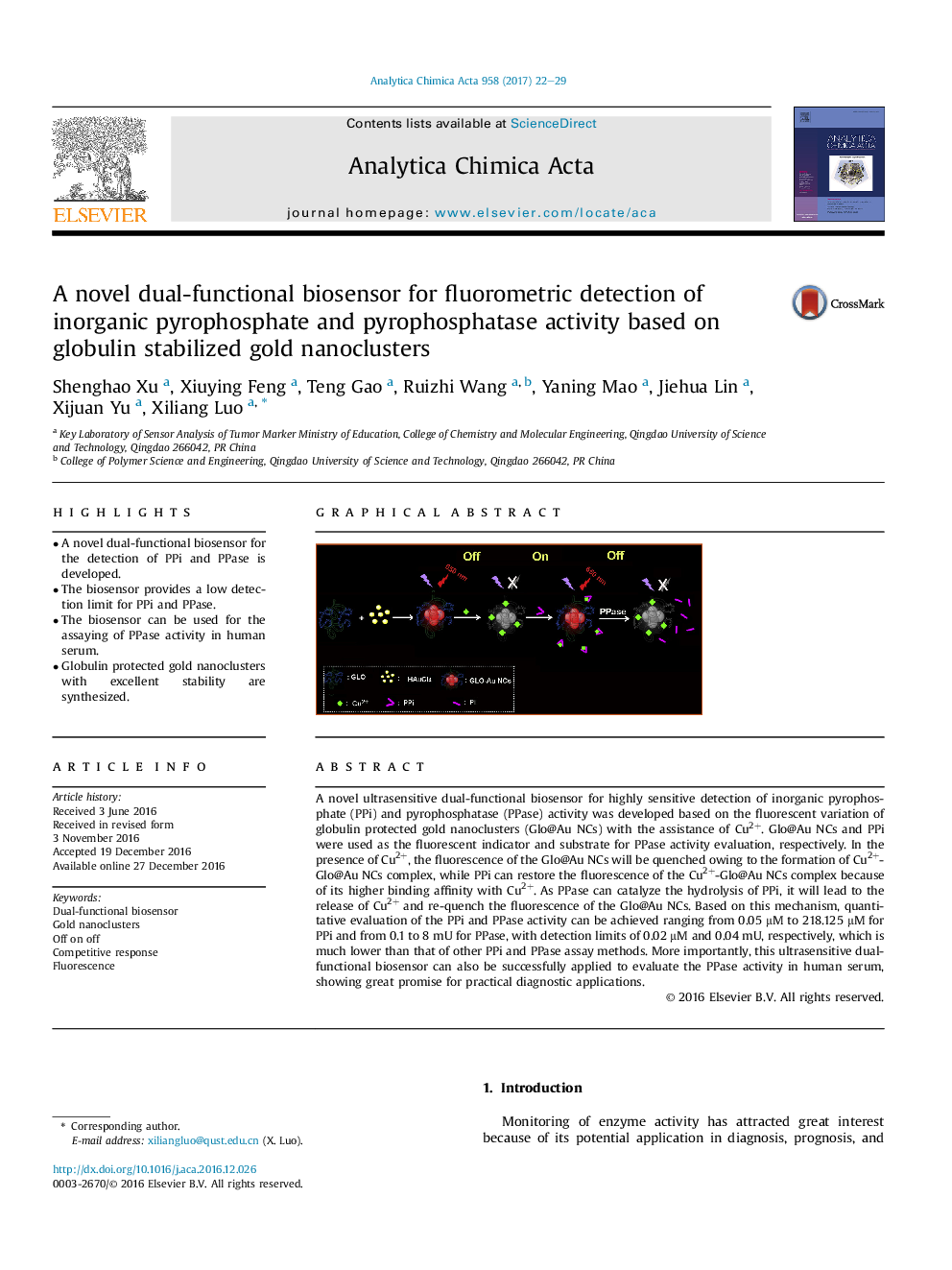| Article ID | Journal | Published Year | Pages | File Type |
|---|---|---|---|---|
| 5131138 | Analytica Chimica Acta | 2017 | 8 Pages |
â¢A novel dual-functional biosensor for the detection of PPi and PPase is developed.â¢The biosensor provides a low detection limit for PPi and PPase.â¢The biosensor can be used for the assaying of PPase activity in human serum.â¢Globulin protected gold nanoclusters with excellent stability are synthesized.
A novel ultrasensitive dual-functional biosensor for highly sensitive detection of inorganic pyrophosphate (PPi) and pyrophosphatase (PPase) activity was developed based on the fluorescent variation of globulin protected gold nanoclusters (Glo@Au NCs) with the assistance of Cu2+. Glo@Au NCs and PPi were used as the fluorescent indicator and substrate for PPase activity evaluation, respectively. In the presence of Cu2+, the fluorescence of the Glo@Au NCs will be quenched owing to the formation of Cu2+-Glo@Au NCs complex, while PPi can restore the fluorescence of the Cu2+-Glo@Au NCs complex because of its higher binding affinity with Cu2+. As PPase can catalyze the hydrolysis of PPi, it will lead to the release of Cu2+ and re-quench the fluorescence of the Glo@Au NCs. Based on this mechanism, quantitative evaluation of the PPi and PPase activity can be achieved ranging from 0.05 μM to 218.125 μM for PPi and from 0.1 to 8 mU for PPase, with detection limits of 0.02 μM and 0.04 mU, respectively, which is much lower than that of other PPi and PPase assay methods. More importantly, this ultrasensitive dual-functional biosensor can also be successfully applied to evaluate the PPase activity in human serum, showing great promise for practical diagnostic applications.
Graphical abstractGlo@Au NCs with unique optical properties were synthesized for the first time by using globulin as both the reducing and capping agents, and they were further used for the development of a highly sensitive and selective fluorescent bioassay for PPase in human serum.Download high-res image (220KB)Download full-size image
